What does a grumpy old widower have in common with a chubby young boy scout? Nothing! This is why the eventual friendship between the cranky Carl and the young Russell was so entertaining in Pixar’s 2009 film, Up.
Imagine how much more interesting it would be if such unlikely friendships happened in real life. Luckily, they do—among very famous historical figures, no less. Here are some of the most unexpected ones:
1. Harry Houdini and Arthur Conan Doyle
One was an illusionist; the other was a famous author. Harry Houdini and Arthur Conan Doyle formed an unlikely friendship after they were brought together by their spiritualism.
They were already celebrities by the time they met in 1920. Conan Doyle’s Sherlock Holmes stories were massive hits, and Houdini had already staged dozens of live shows performing various stunts and escape acts.
It wasn’t just their careers that made them different. The Guardian described Conan Doyle as a Scottish Victorian gentleman, while Houdini was a self-educated Hungarian immigrant in the U.S.
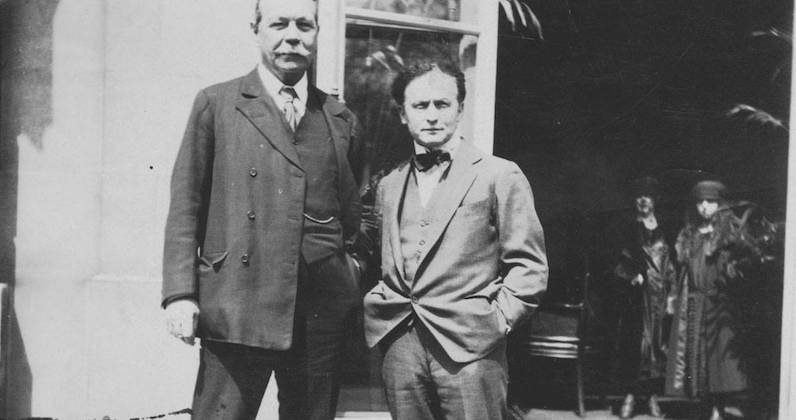
Conan Doyle believed in the supernatural and was convinced that Houdini had magical powers that allowed him to perform his illusions. Conan Doyle sought out Houdini, and they became quick friends.
However, after many public outings, the friendship fizzled when Conan Doyle’s wife, Jean, attempted to contact Houdini’s mother through a private seance. According to reports, Houdini’s mother tried to make contact through 15 pages of writing. Houdini didn’t believe it was his mother because the language was too grammatically correct.
Additionally, Houdini denounced mediums, which annoyed Conan Doyle. The friendship was never mended.
A British TV series was commissioned to showcase this fascinating relationship. Houdini & Doyle aired ten episodes in 2016.
2. Marilyn Monroe and Ella Fitzgerald
Both were entertainers, so it should not have been much of a surprise that Marilyn Monroe and Ella Fitzgerald were friends. However, Fitzgerald was Black, and segregation was still rampant in the United States at the time.
Fitzgerald had been making waves as a jazz singer since the 1930s. Up to the 1950s, she had only booked gigs in small venues. It wasn’t until she was given a chance to play at Mocambo nightclub that her career skyrocketed. Guess who made that possible? Marilyn Monroe.
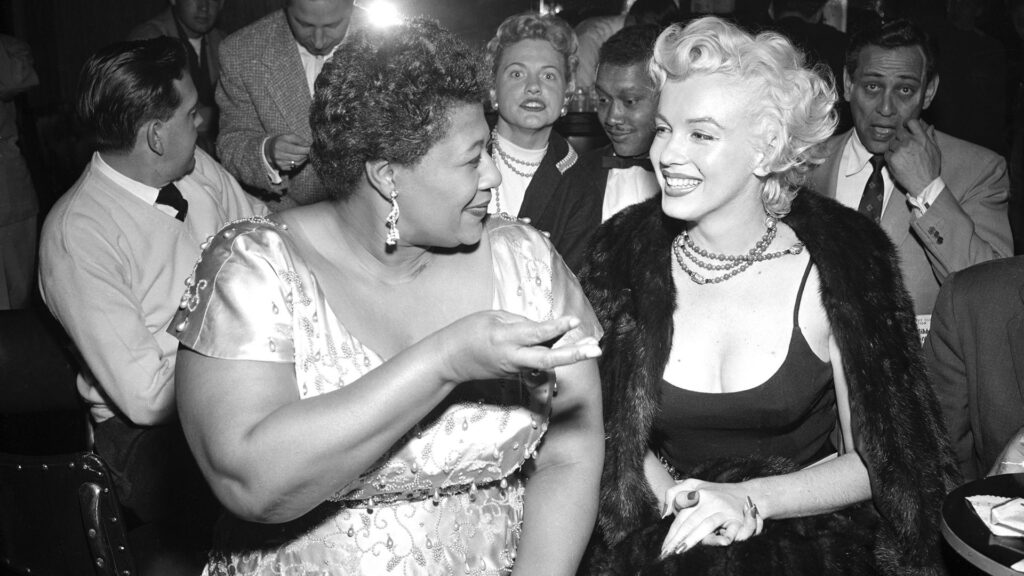
The nightclub reportedly didn’t want to book Fitzgerald in 1955 because of her race. Monroe referred to Fitzgerald as her “very favorite person.” She called the nightclub and got her the gig.
Yahoo! quoted Monroe’s friend Amy Greene, who described the incident: “Marilyn read this in the paper and got very annoyed and called the manager and said, ‘Hi, this is Marilyn Monroe, and if you rebook Ella Fitzgerald, I will come every night to hear her sing.’” Nobody said no to Monroe, so Fitzgerald was booked.
They first met in 1954 when Monroe watched Fitzgerald perform at a small nightclub in Los Angeles.
3. Prince and Muhammad Ali
They were both fans of each other but only met in June 1997, after both had already peaked in their careers. Prince was such a fan of the boxer that he didn’t mind that he only had two days’ notice for the scheduled meeting at the Hay-Adams Hotel in Washington, DC. Prince was asked to support Ali’s World Healing Project.
The BBC reported that Prince said this when Ali’s team invited him: “He said, ‘Muhammad wants you to…’ and I said ‘Yes.’ I didn’t even let him finish. He could have said, ‘Mow the lawn,’ and I would have been down with it. Muhammad’s my hero. He has been since I was a child.”
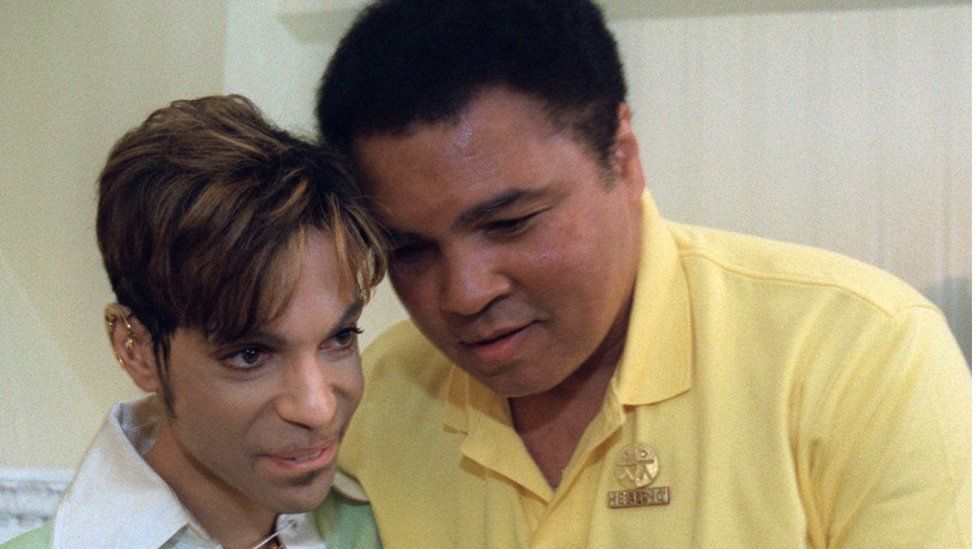
During the meeting, they reportedly bonded over magic, which started a lasting friendship. Both died in 2016—Prince on April 21 and Ali on June 3.
When Prince died, Ali tweeted: “We’ve lost a true original. Prince was someone who cared for others and used his genius to help many.”
4. Joe Louis and Max Schmeling
Joe Louis and Max Schmeling were rivals in the ring. However, years after their time as boxers, they found common ground and became friends.
Louis was a much younger Black American pugilist, and Schmeling was a German boxer with something to prove. Schmeling had a fan in Adolf Hitler, which unfortunately got the boxer fighting for Nazism. Boxing enthusiasts had dubbed Louis and Schmeling’s 1936 and 1938 fights as a battle between Americanism and Nazism.
To be clear, Schmeling wasn’t a Nazi. However, his win over Louis was used as propaganda in favor of Nazism. Louis, for his part, was devastated by the loss via knockout, his first. A rematch was organized two years later, and Louis dominated—he knocked Schmeling out in the first round.
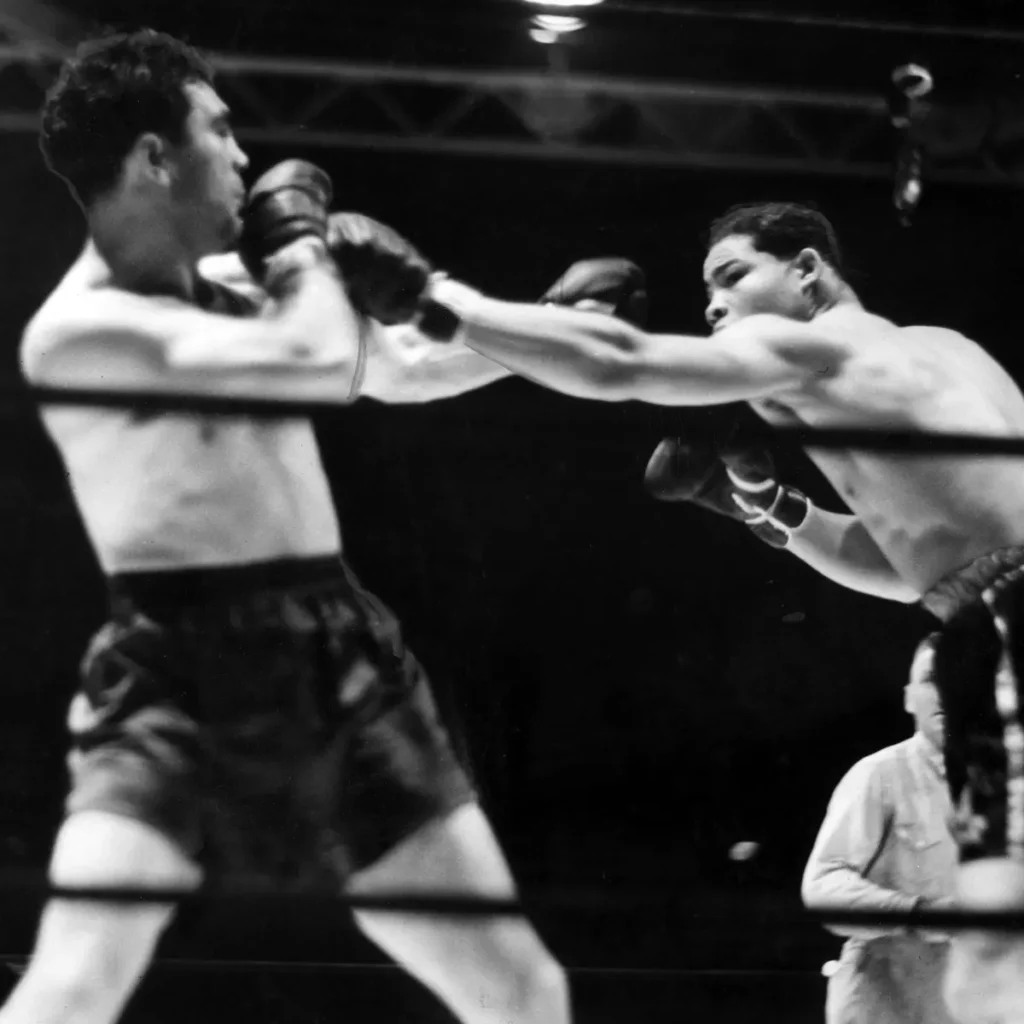
Americans celebrated the win uproariously. A loss against Germany and Nazism would have been unfathomable. However, Louis and Schmeling weren’t comfortable with the burden they had to carry for their countries.
Louis didn’t want to represent a country that oppressed Black people, and Schmeling didn’t support Adolf Hitler and his party. They bonded over their similar situations.
In the end, only death separated the two. Louis died in 1981, and Schmeling was one of his pallbearers. Their friendship was immortalized in the 2002 TV movie Joe and Max.
5. President Ulysses S. Grant and James Longstreet
Unlike many of the duos on this list, Ulysses S. Grant, who became the 18th U.S. President, and James Longstreet had been friends for a while.
They were at West Point together, with Longstreet graduating in 1842 and Grant a year later. There are unverified reports that Longstreet became Grant’s best man at his wedding to Julia Dent in 1848.
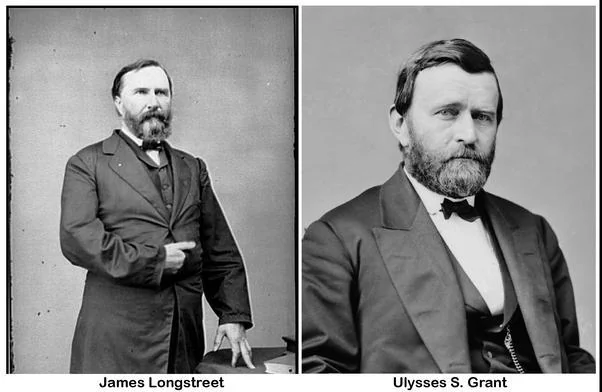
So, what was unusual with their friendship? It was astonishing that it lasted through the Civil War, where they fought from opposing sides. Grant was the commanding general that led the Union Army to victory in 1865. Longstreet was a general of the Confederate Army and the principal subordinate of Robert E. Lee.
Longstreet was responsible for convincing Lee to surrender and end the war. Grant and Longstreet resumed their friendship and served at the Jefferson Barracks shortly after their West Point graduation. They then fought side by side in the Mexican-American War.
6. Pope John Paul II and Ali Agca
Can you really be friends with the Pope? Perhaps not. However, the extraordinary meeting between Pope John Paul II and his would-be assassin is worth including in this unexpected friendships list.
On May 13, 1981, Mehmet Ali Agca shot Pope John Paul II as he entered St. Peter’s Square to address the faithful. The Pope was hit in the abdomen multiple times and was in critical condition. Despite being gravely hurt, Pope John Paul II said, “Pray for my brother… whom I have sincerely forgiven.”
Agca was immediately restrained, arrested, and sentenced to life in prison. Reports aren’t consistent regarding Agca’s reason for the attempt on the Pope’s life. One account stated that it was because the Pope was the leader of the Crusades, while another said it was supposed to be revenge for the attack on the Grand Mosque in Mecca. He had been a member of the Turkish national group.
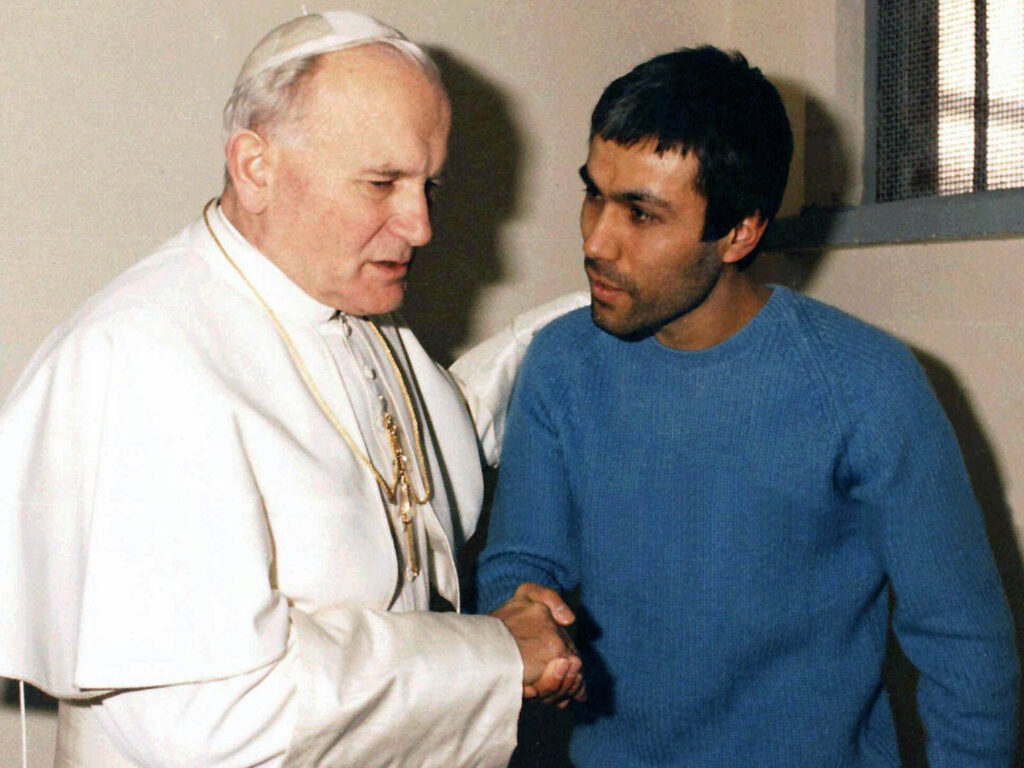
On December 27, 1983, Pope John Paul II visited Agca in prison. Agca kissed the Pope’s hand. They spoke for at least 20 minutes out of earshot. The Pope also gave Agca a gift, a silver rosary.
When the Pope fell ill, Agca sent a letter wishing him well. When Pope John Paul II died on April 2, 2005, Agca and his family grieved.
Agca was eventually released in 2010. Four years later, he laid roses at the tomb of the late pontiff.
7. Mark Twain and Helen Keller
They met in 1895 when Helen Keller was only 14, and Mark Twain was 60. Despite the age gap, the two struck a surprising friendship. In his autobiography, Twain recalled: “Without touching anything, and without seeing anything, obviously, and without hearing anything, she seemed to quite well recognize the character of her surroundings.”
Keller was also instantly at ease when she met Twain. “The instant I clasped his hand in mine, I knew that he was my friend,” Keller said.
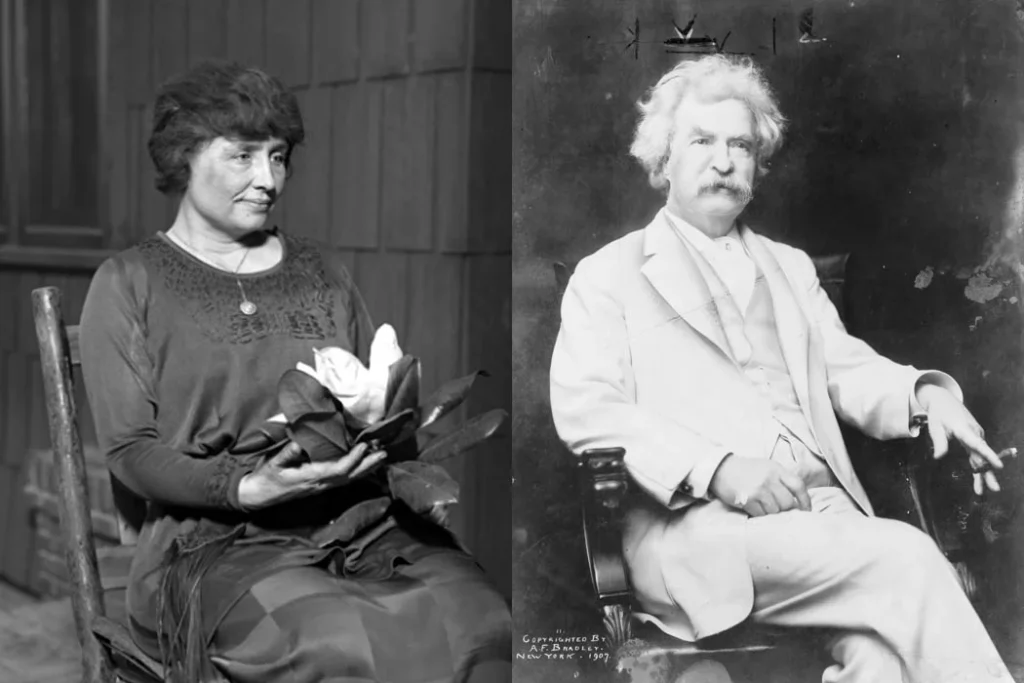
Twain helped Keller get into Radcliffe College, which has since been integrated into Harvard University. She became the first deaf and blind person in the U.S. to earn a college degree.
The two continued to write to each other, and when Twain’s wife Olivia died in 1904, Keller wrote to comfort him. It wasn’t all sentimental, as both were known to tease each other via correspondence.
Keller loved that Twain treated her like a regular person. Shortly before Twain’s death, Keller spent time with him at his home in Redding, Connecticut.
Friendships Form in the Most Unlikely Places and Among Unexpected People
Friendships often bloom because of shared backgrounds and circumstances. However, some relationships form naturally despite there being nothing in common between them. But they endure because both parties nurture the bond and are determined to maintain it.

